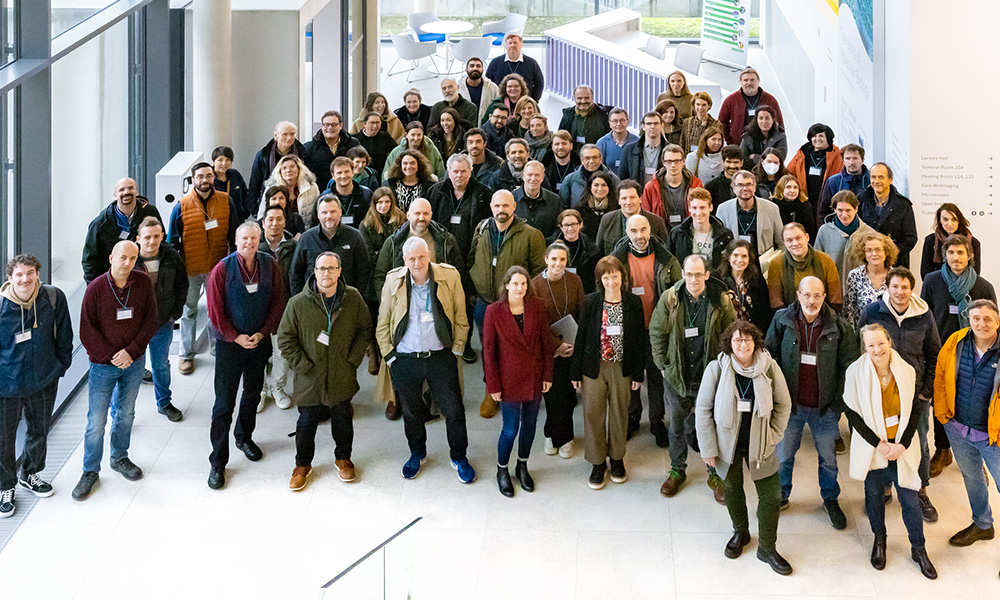
Back to top
Research
06 February 2023
• Updated
13 February 2023IJN
BIOcean5D targets marine biodiversity
Researchers from across Europe gathered at EMBL Heidelberg to begin work on a large-scale project exploring life beneath the waves, in all its forms. BIOcean5D brings together 31 research partners with the aim of holistically exploring marine biodiversity at molecular and organismal levels – from viruses to mammals – across space, time, and human scales. Within this project, the members of the ECN "environment: concepts and norms" team;of the Institut Jean Nicod, especially Sacha Bourgeois-GirondeRoberto Casati, andEva Wanekare interested in the dynamic and functional complexity of marine life, which will be analyzed for its economic value and the legal issues it raises.

Painting a multiscale picture
This major undertaking spans national borders and scientific disciplines, and will be rolled out over the next four years. It will provide a vital insight into the rapidly changing nature of marine ecosystems.The project is centred around the essential role that biodiversity plays in sustaining marine ecosystems. Such ecosystems are vital for planetary and human health, and yet large gaps in scientific knowledge and understanding remain. Recent surveys of marine ecosystems have revealed a lack of understanding about the abundance, function, and collective dynamics of marine biota, as well as presenting environments that are changing at an exceptionally fast rate as a result of human activities.
Marking a new ecological era
Colomban de Vargas is Research Director at CNRS/Sorbonne Université, and the BIOcean5D project deputy director and scientific project coordinator. He explained what sets this enterprise apart from other research programmes, “BIOcean5D is all about marine biodiversity. One of our important novelties, and strengths, is combining the MICRO- and MACRO- biomes, and in this way covering the full organismal and functional biodiversity, which is arguably the biggest challenge of modern ecology.”"By doing this across space, time and human impact (the 5 Dimensions of BIOcean5D) I believe we will be marking a new era in ecology. The beauty of BIOcean5D is also the large space left for fundamental research, exploration and discovery. We are about to re-explore marine life, from viruses to whales, in water, sediments, and aerosols, along the entire European seascape from Finland to Crete (in collaboration with the TREC expedition).” He added, “We will do this with new methods allowing deep quantification of genomic and morphological biodiversity at both population and individual levels, including the microbiomes living in symbiosis with larger biota.”
Over the coming four years, BIOcean5D will help to bridge molecular/subcellular biology to organismal biology, theoretical ecology and econometrics, and marine complex systems to social sciences. These efforts will ultimately feed into the urgent tasks of informing international policies to underpin the sustainable preservation of our oceans and seas.
Commenting on the ambitious nature of the project, Josipa Bilic Zimmerman, EMBL’s Planetary Biology programme manager and acting BIOcean5D project manager, said : “we are at the beginning of a long, exciting road with this project, and this is clearly the onset of something bigger. Together with the great potential offered by the development of new technologies, we are able to come together under the BIOcean5D consortium, and combine expertise in molecular biology, ecology, oceanography, data sciences, economics and ocean literacy. Through this great collaboration – that will provide us with valuable data and a more detailed insight — we can make an important contribution to a future of sustainable preservation of our oceans and seas, and all the life they support.”
BIOcean5D has received more than 17 million Euros in total from the European Commission under grant agreement 101059915, and from the Swiss and UK government for Swiss and UK partners.



